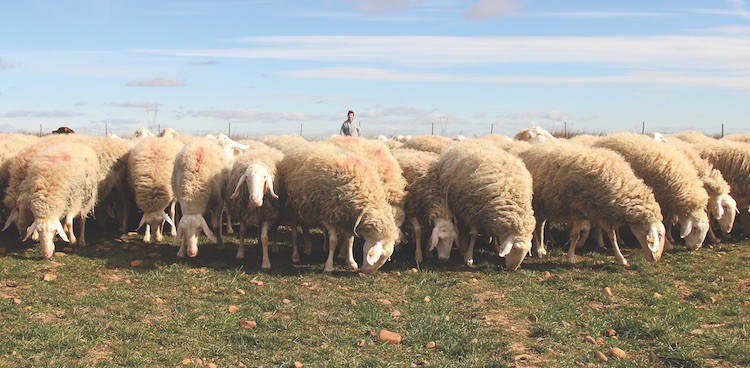
While sheep have been prized for their milk and meat for thousands of years, one of the most high-yielding breeds, the Assaf, is only 60 years old. The product of early agricultural experimentation in 1950s Israel, the Assaf has the Israeli Agricultural Research Organization to thank for its existence. Researchers there originally set out to improve the fertility of the then-favorite Awassi breed, an ancient Israeli-Egyptian sheep with an especially long lactation period. They crossed the animal with one of the world’s best milk-producing breeds, the hardy German East Friesian, resulting in the Assaf, a sheep with very high milk yield.
The breed grew popular first in Israel, then in Spain, Portugal, Chile, and Peru. And in early 2015, true Assaf sheep were born from imported Awassi and East Friesian embryos on Karras Farm in Rock Hill, South Carolina—the first Assaf lambs born on United States soil, according to owner and breeder Andy Karras.
“These animals will be the future dairy sheep of the United States,” Karras says. Due to their resiliency and docile nature, the sheep are a good choice for both commercial dairy operations and beginning homesteaders, he adds.
Temperament and Appearance
The Assaf retains traits from both of its parent breeds. It has long Awassi ears, which means more skin surface area to dissipate the heat of sultry Middle Eastern and Mediterranean climates—or, of US regions previously thought too hot for sheep to live in, such as New Mexico, Arizona, and Southern California. East Friesian genes give the Assaf its predominantly white wool coat (red accents appear on the breed’s ears and face). Assaf sheep are calm around people, affable, and easy to milk.
“They’re hardy, disease- and wormresistant, low-maintenance animals,” says Karras, noting that his operation has sold the animals to every state in the country, including Hawaii.
Milk and Cheese
Sheep’s milk is higher in fat and protein than both cow’s and goat’s milk. With a high percentage of both nutrients, Assaf sheep’s milk is a no-brainer for cheesemaking, but Karras uses it for yogurt and ice cream, too.
“We made a peach ice cream that was simply magnificent,” he says. As the breed’s popularity accelerates, Karras predicts that more cheeses will be made using Assaf milk, particularly traditional cheeses like feta.



